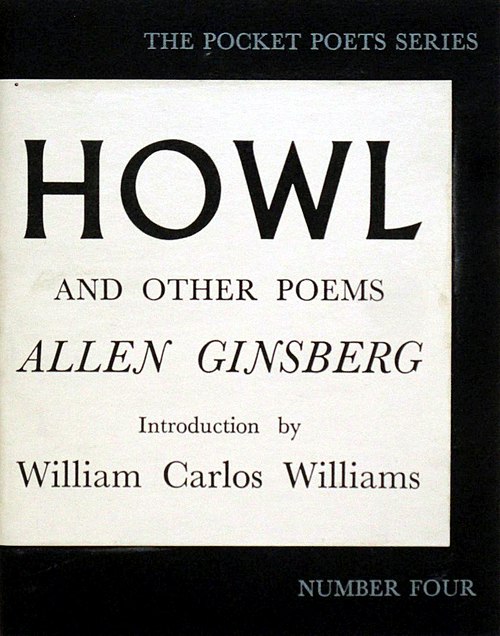Facts for Kids
Howl is a groundbreaking poem by Allen Ginsberg that captures the struggles of a generation, intertwining themes of mental illness, sexuality, and spiritual questing within the context of post-war America.
Overview
Biological Purpose Of Howling
Scientific Studies On Howling
Cultural Significance Of Howling
Howling Techniques And Variations
Howling In Literature And Folklore
Howling In Different Animal Species
Howling And Its Impact On Ecosystems
Comparison Of Howling And Other Vocalizations

Inside this Article
American Crow
Communication
Literature
Territory
Addition
Society
Whistle
Nature
Words
Did you know?
🌌 'Howl' was written by Allen Ginsberg in 1955, making it a defining work of the Beat Generation.
📖 The poem's full title is 'Howl and Other Poems,' and it addresses the struggles of post-war America.
🌊 'Howl' explores themes of mental illness, sexuality, and spirituality, often diving into the depths of human experience.
✨ The poem is known for its chaotic structure and raw language, reflecting the tumult of the time.
🏙️ Ginsberg wrote 'Howl' in response to the oppressive societal norms of the 1950s.
🗣️ The poem's first section, 'Howl,' is famous for its rhythmic cadence and passionate delivery.
🚀 'Howl' has been both celebrated for its artistic merit and controversial for its candidness about taboo subjects.
🎨 The work incorporates cultural references and allusions to various artists, thinkers, and literary giants.
📅 'Howl' was the subject of an obscenity trial in 1957, challenging the boundaries of freedom of expression.
💡 'Howl' remains influential today, inspiring countless poets and activists in their quests for social change.
Introduction
It was made famous by a poet named Allen Ginsberg in 1956. Ginsberg's "Howl" talks about the struggles and thoughts of people living in cities, like New York. This poem is known for its passionate style and uses a lot of images to show feelings. It also encourages readers to think about society and how people feel! 📜
Just like a howl from a wolf can mean different things, poems can share different emotions and stories. Howl teaches us the power of words!
Biological Purpose Of Howling
Wolves howl to communicate with other pack members. This helps them stay connected and find each other when hunting! They also use howling to warn others about intruders or dangers. 🐺
Did you know that some birds, like the American crow, also create sounds that sound like howling? They use these sounds to alert each other about food or danger. So, just like in poetry, howling helps animals express important messages too!
Scientific Studies On Howling
Researchers, like Dr. David Mech, have studied wolf communication for over 50 years. They find that howling helps wolves strengthen their pack bonds and coordinate hunting strategies. 📚
Some studies also look at how different environmental sounds influence animals' howls! Researchers are even examining how urban noise affects animals' communications. Understanding howling helps us learn more about animal intelligence, social structures, and how they adapt to their environments!
Cultural Significance Of Howling
In many Native American tribes, howling is associated with wolves and represents loyalty and teamwork. Some tribes even hold ceremonies where they howl to honor these animals! 🎉
In literature and music, howling has been used to express emotions of love or sorrow. For instance, some singers howl in their songs to show deep feelings or connect with nature. Howling reminds us of our relationship with the world around us!
Howling Techniques And Variations
For example, poets use rhythm and repetition to create an emotional effect! Allen Ginsberg used long lines and powerful words to draw readers in. 🌟
Animal howling can also vary. Wolves may use long, loud howls to communicate over long distances, while smaller animals may use higher-pitched howls! Communication changes depending on what they want to express. Each howl is unique, just like every poem is different—both find a way to express special feelings!
Howling In Literature And Folklore
In many cultures, wolves are seen as symbols of strength and teamwork, often depicted as howling at the moon. 🌕
For example, in the tale "Little Red Riding Hood," when the wolf howls, it creates a mysterious mood! Even in modern literature, poets use howling to show deep emotions or connect with nature. Songwriters often write songs about howling winds, representing loneliness or adventure. Howling is a powerful element in our stories, connecting us to different cultures!
Howling In Different Animal Species
Did you know that coyotes, which are smaller cousins of wolves, often howl to mark their territory? They use a musical style that sounds like singing! 🎶
Some other animals, like foxes and even certain types of monkeys, can be heard howling too! Each animal has its own unique way of howling or vocalizing to connect with others!
Howling And Its Impact On Ecosystems
When wolves howl, they help maintain the balance of nature. By hunting deer and elk, they keep populations in check. This allows plants, like grass and bushes, to grow—it creates a healthy environment! 🌿
Many animals depend on these plants for food. In addition, when wolves hunt, it creates opportunities for scavengers like ravens and bears. 🐻
So, with howling connecting these animals, it shows how they work together in nature, making it a cleaner and balanced habitat for everyone!
Comparison Of Howling And Other Vocalizations
For instance, lions roar to establish territory, while dolphins click and whistle to communicate in the ocean! Howls are often long and drawn out, while barks or roars are shorter and sharper. 🎶
In poetry, a howl can be expressive and emotional, like shouting out your feelings! In contrast, a whisper conveys secrets. Both animal sounds and poetry use different vocalizations to express what they want to say, showing the variety of communication methods in nature and literature!

